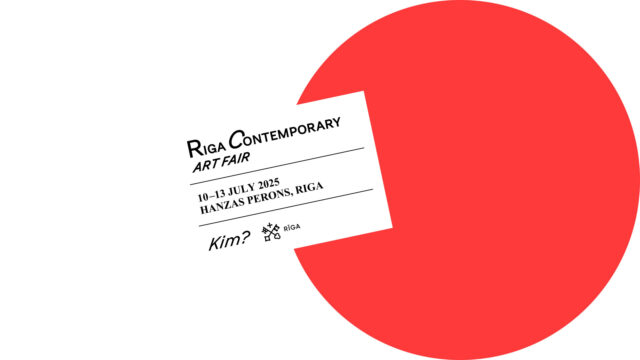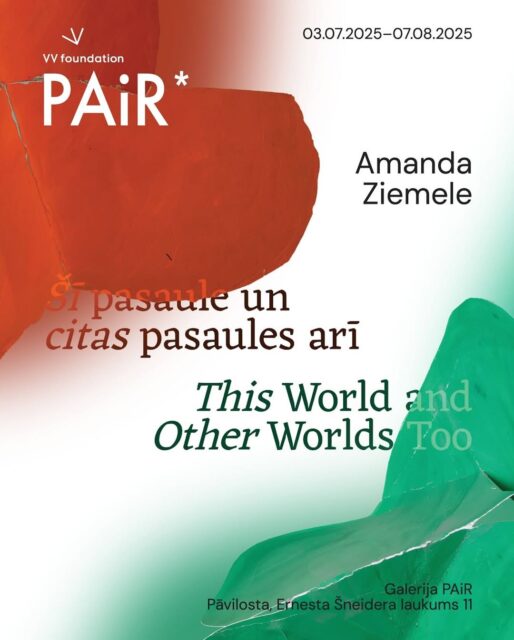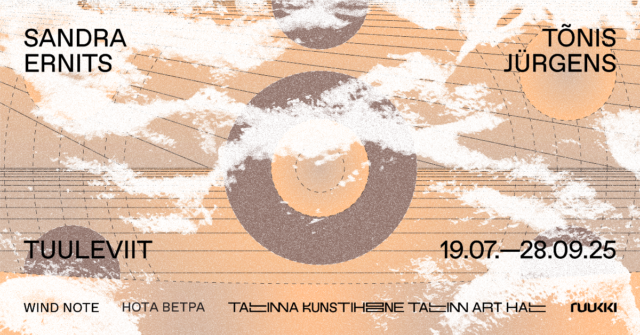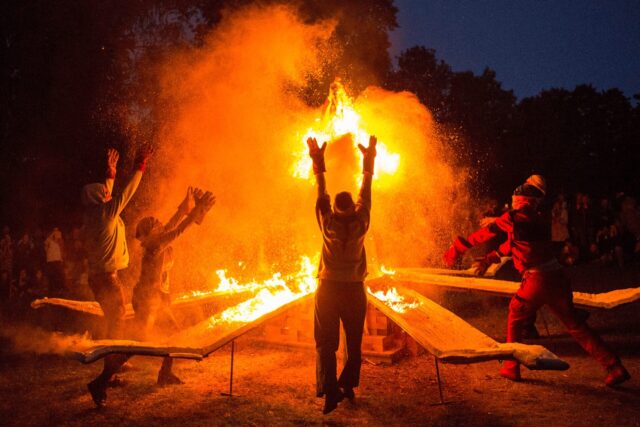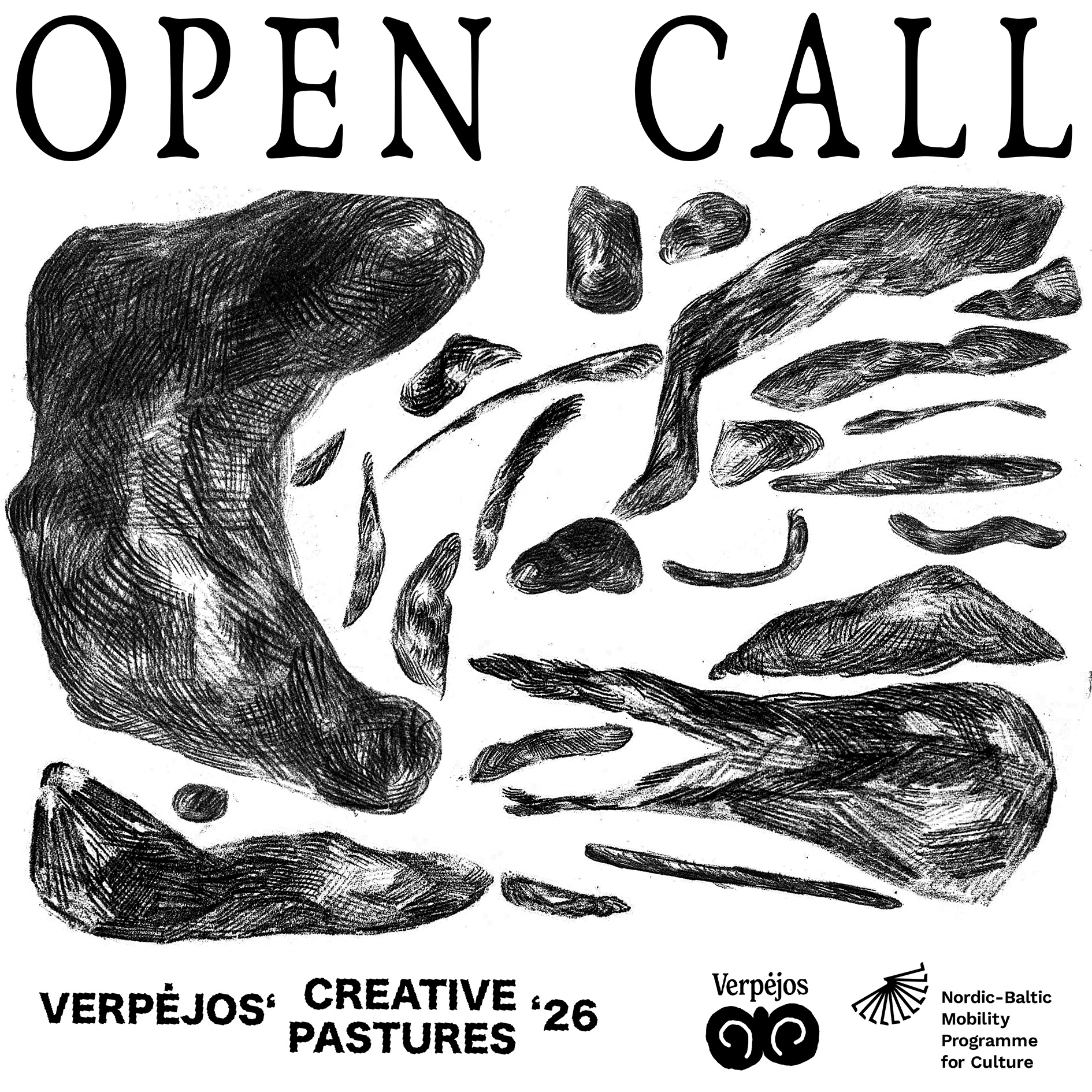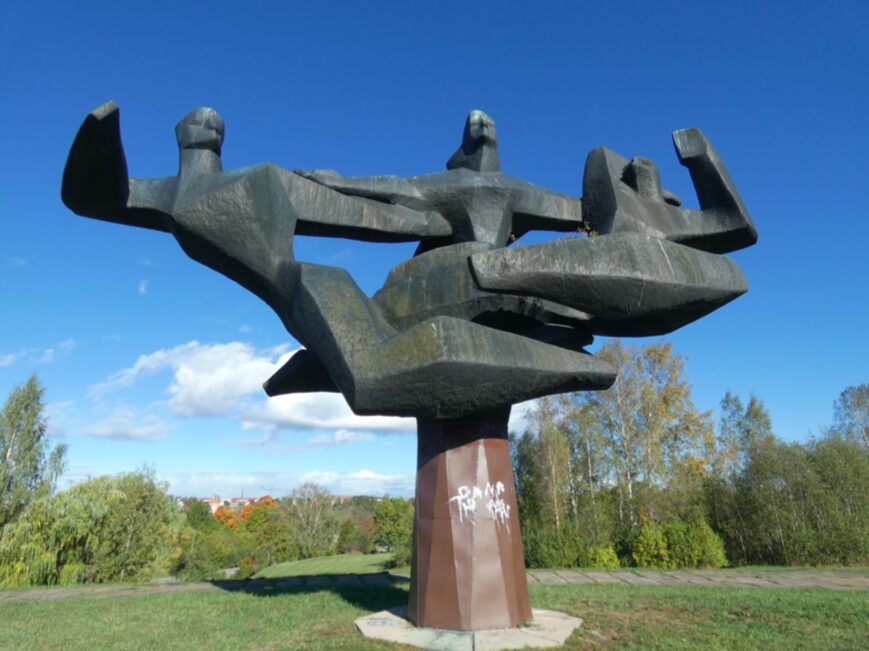
Alexei Gordin. Alone in the studio. Acrylic on canvas, 120 x180 cm, 2017. Photo: Young Painter Prize
On the 26th of October 2017, the winning artist of the Young Painter Prize 2017 was announced at the opening exhibition for its finalists in an award ceremony taking place in the exhibition halls Titanic of Vilnius Academy of Arts (Maironio str. 3, Vilnius, Lithuania). During the event, held for the ninth time this year, Alexei Gordin (Estonia) was awarded the title of best young painter of all the three Baltic countries, after having presented a piece from his project consisting of paintings and video works entitled Art Is Not Just Fun Anymore (2017). [1]
Claiming that he generates a pictorial narrative with his creative work which allows the viewer to look deeper at the vices of today’s neoliberal society with all its social traumas and grimaces of contemporary (art) politics, Gordin seems to be speculating with condensed, “sharpened” meanings (as well as hints of meaning), transforming them into compressed sarcastic messages, which, in turn, should cause the viewer to pause, take note, rethink the realities of inert contemporaneity, as well as, the wayward character of contemporary art. Inserted into the sweetish, decorative content of the painting, which reminds me of a pictorial illustration, the apprehensions of the artist are granted with the peculiar function of a match point: the entirety of the painting seems to be so absurd, that as a viewer, we may choose either to believe in the legitimacy of the reality being presented to us, or to undertake a role that requires more critical consciousness. However, to qualify and appreciate “Art”, we are probably already quite used to taking into consideration not only that what is being obviously declared within the artwork, but also to gradually uncover the significances (alongside the material and visual forms, assigned to the latter), which may relate to our own intellectual experiences. One way or another, it is difficult not to notice the inscription, painted in a manner of a comic book caption, which is present in Gordin’s winning painting Alone at the Sudio (acrylic on canvas, 180×120, 2017). So when we learn, that the statement “I live the life of a middle artist / not a great one / not a bad one / just a middle one” will be tattooed into the author’s skin – on the condition, that a buyer for the painting emerges [2] – it is no longer hard to believe, that Art Is Not Just Fun Anymore (sic). Moreover, as winner of the Young Painter Prize, Gordin was awarded 2,000 Euros; a grant for a two-month creative residency at SomoS residence-center, Berlin, and the opportunity to exhibit his artwork at Pamėnkalnio gallery in Vilnius next year.
Here, questions of the “status of a young painter” (a), of “artistic competitions of a similar character” (b), as well as the impact of these, upon the forthcoming career of an artist under 30 years old (c), become the main problematic components explored within my analysis. Commonly, not only a few of the titled “young artists” – still at the presence of the spotlights – recognize, that the awards merited during art fairs or specialized art contest programmes are not the particular creative-zenith situation, finding oneself in which the artist would be flooded with substantial commissions, phone-calls from the front-runner art professionals, informing about the upcoming shows to include one‘s work. Meanwhile the art – critique would gain at least some more “decent distance”, – the latter evaluation criterion, most likely, should be re-evaluated itself, yet the “critical criticism“ (or, critique of the critique (sic.)) is way more often travelling from lips to lips, not only as this urban-critical-folklore, inherent to the relatively narrow band of contemporary art people, but also – perhaps – as an echo of some real and current problems, resonant of the discourse of nowadays art-life. Reiterating oneself, the question of generations is ripping through the art centres, private galleries and the keyboards of art writers for not the first century, yet – in substance – art is neglecting the gossip, while the critique is dealing with gossip-based art. Art must and is going on / or / Art Criticism is not just fun anymore.
Thus, young artists collectively believe that early-stage awards do not equal the experience gained working in the studios of more prominent artists, attending art-residency programmes; it does not always beat the true commitment and professionalism of their daily personal research either. So the “reward of the award” here is not understood as the next step in the coordinated system of a young artist’s career, but rather a transient moment of gladness that passes, leaving them to devote their time afterwards to the creator’s reality in to once again – and yet.
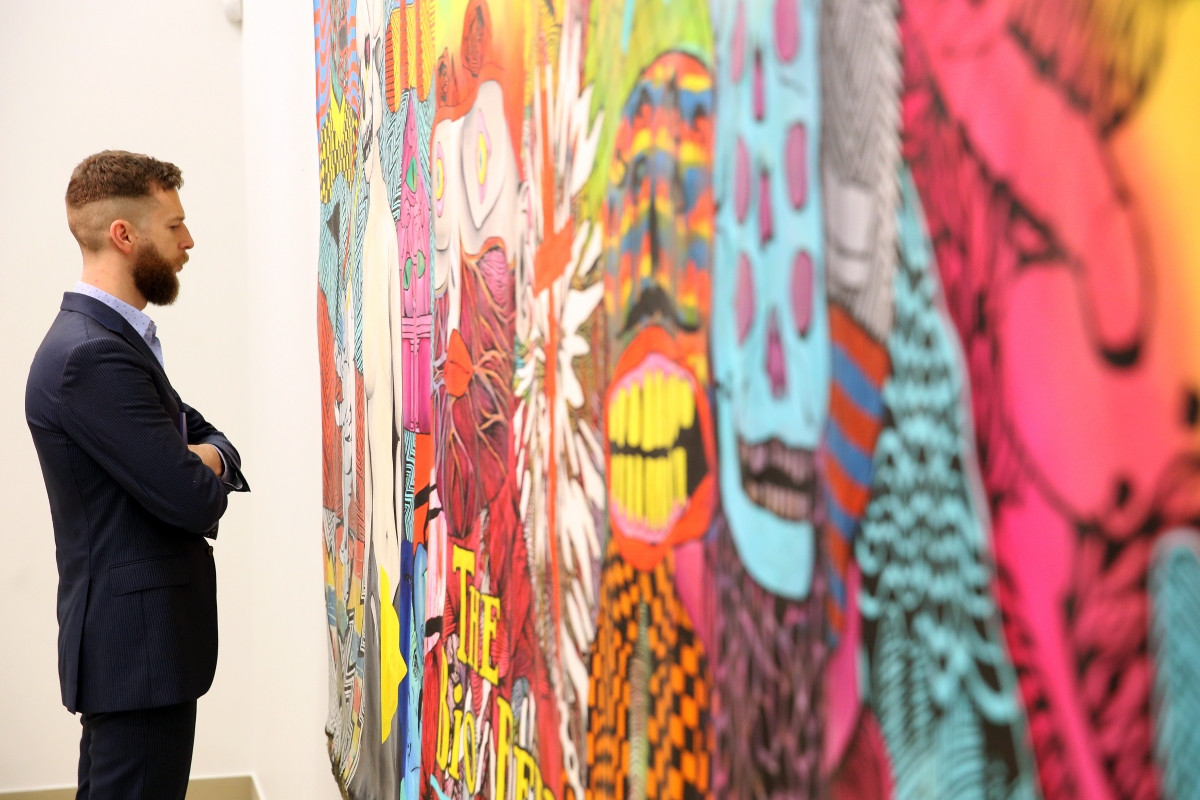
Photo: Young Painter Prize
In the year 2017, from the 78 painters who applied for the Young Painter Prize, 15 have been selected as finalists for the group show: Alexei Gordin (EE), Alo Valge (EE), Auksė Miliukaitė (LT), Barbara Ābeltiņa (LV), Danel Kahar (EE), Grisli Soppe-Kahar (EE), Joskaudė Pakalkaitė aka Yoshi (LT), Jurgis Tarabilda (LT), Kristaps Priede (LV), Povilas Ramanauskas (LT), Robin Nõgisto (EE), Sandra Strēle (LV), Simonas Kuliešis (LT), Vita Opolskytė (LT), Rūta Vadlugaitė (LT). Partially, this might mean that the remaining 63 artists, who were not selected, have been declared to be “not as good” painters by the jury. At this point, I want to refrain myself from the lovey-dovey “world-peace principle” and expose a few essential questions once again: I) What is the significance of the Young Painter Prize to us, as the audience? II) What is the significance of the award to the “young painter”? III) For what reasons has Alexei Gordin been chosen to be the winner of this year’s contest?
I.
Answering this particular question for the ninth time in a row, a philological dilemma upon the aprioric scope of existence for such genre arises. However, if we get to the root of the problem: | Young | (Adjective; (m)(f) |- “not having much of age; having less of an age than the others; On the contrary – old: A young person, tree, animal, young generation; The youngest son has finished his studies, He’s still young, the offspring”.[3] serves here allegedly, while trying to understand the essential status of a “young artist”, as well as the meaning of a painting competition – significance of which rises directly out of such status. Yet, what does it have to do with painting? – i.e. is an artwork of the artist “not having as much age/ having less of an age than the others” of lower / higher value, in comparison with the artist having more of age? What is the main criteria, while deciding upon the value of a prize for competitions alike Young Painter Prize? – i.e. is 2,000 Euros a sufficient award to be presented to an artist under 30 years old, in comparison with a talented artist at the age of e.g. 32?[4] Furthermore, are the art-residence programmes relevant to artists over 30 anymore, when comparing them to their junior colleagues? By what means can the significance of a young painter’s artwork be estimated? All these naturally emerging issues lead to the conclusion that perhaps in the same way people have felt a tautological need to standardise and categorise art into divisions and categories (e.g. Women art, National minority art, Queer art, Young artist’s art, Baltic art, Eastern/Northern European art, etc.), following the categorical scheme of “A young person, tree, animal, young generation (sic.)”, it reveals this latter to be the dominant significance. For it isolates young artists (or, at least, their artworks) into a particular ideological context of generation, genre and certain visual and conceptual means. Paradoxically, it not only creates the facilities for interpreting and valuing such art without the connotations attributed from aside, but also justifies the incubatory context of the artwork which is anticipatory, in a way pre-given, henceforth it participates in the process of perception of the artwork from the very beginning (or, should I say the very end?). Thus, in answering the question of what the significance of the Young Painter Prize is to the audience, I shall give my condensed opinion: It is a successful attempt to classify (according to the equal competitive conditions) the results of artistic works by diverse artists under the age of 30, evaluating them through a contest-based programme which defines their cultural and material value in the context of the region, while encouraging certain creative trajectories of the artists participating in the event. Successful – in outline – is the fact, that each year a show of painters from the three Baltic countries is organised, which allows to see a part of the current artwork in one exhibition space – i.e. to look at each other – if we reject the particular conditions of the exhibition, discussed before in the text. In the year 2017, fifteen painters presented in the final show with their pieces resulting in only 19.23% of the artworks submitted to the prize jury open for public view, which is obviously a curatorial decision, based on the contest’s conditions. As a result, the audience is only offered approximately 20% of the potential exhibition, as well as of a certain ready-made for the future evaluation – “Among the 15 painters from the Baltic countries there is one, who is the best.”\
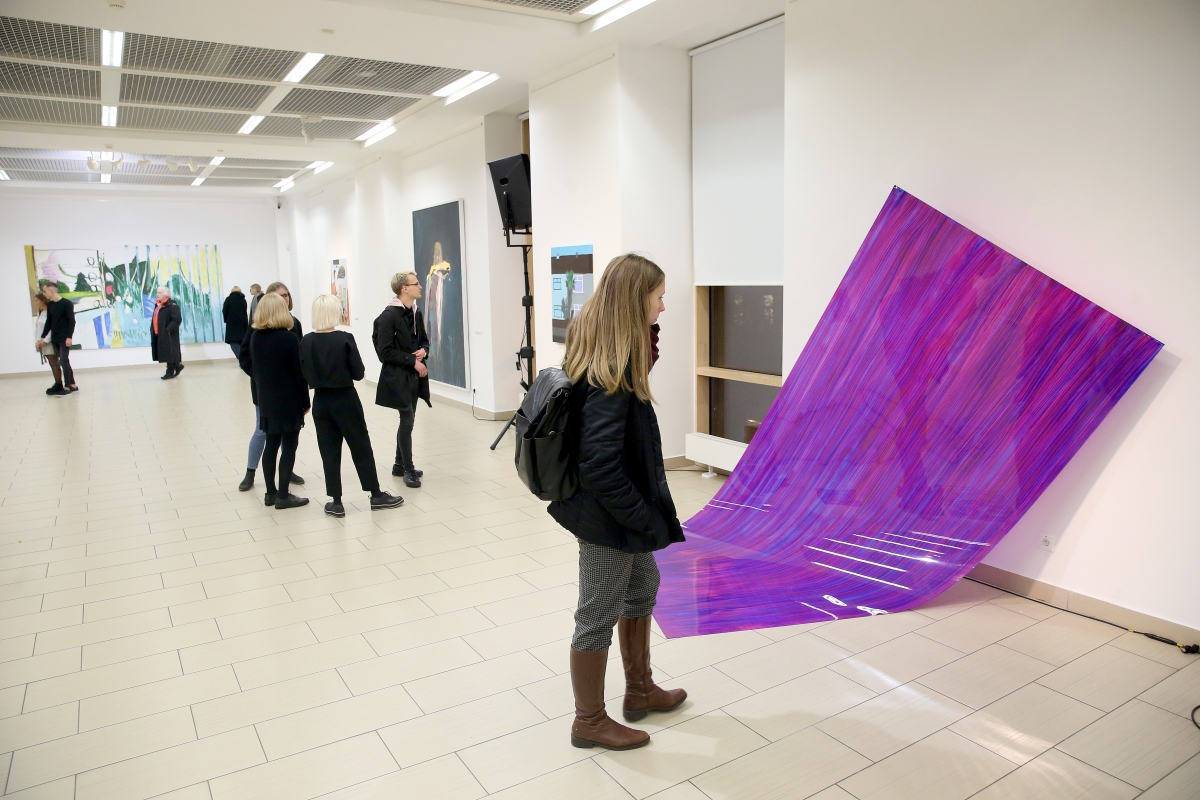
Photo: Young Painter Prize
II.
The young artist believes in recognition, collaborative practises and rapid dissemination of the news. Possibly, one also believes that winning the prize can encourage ongoing faith, and help them to fulfil or further some of their artistic ideas. A young person, inter alia, believes in experience and developing new skills or research, which can possibly be gained at the artistic residency and/or participating in the show of the Young Painter Prize. One’s faith is true and afloat. A young painter realises, that Art Is Not Just Fun (Not Anymore) – yet one is not always sure what to believe in.
III.
In the very centre of Alexei Gordin’s Alone at the Studio (acrylic on canvas, 180×120 cm, 2017) there’s a figure of a “middle artist” making excuses, it seems, for his intermediate state before a finished artwork, aligned with glasses of red wine against one wall of his studio. Under specific ideological conditions, the figure of the painter is conveyed almost masterfully – the washy, acrylic stroke of paint; the graphic depictions of textures resembling a coloured-pencil drawings or a high quality comic books, or a frame from a Kafkaesque animation. The gesture of the figure desperately expecting confirmation from its surroundings, and this strange all-inclusive scantiness that is present in the painting results in an embodiment of the very message of Gordin’s artwork: “I live the life of a middle artist / not a great one / not a bad one / just a middle one”… Still, the cognitive imbalance starts at the point where the realisation comes: that behind this suppressed pictorial reality there is nothing at all, nothing that would warrant the absurdity of the situation. The forms of the painting respond to the words present within it, and the words are donated to the forms. This is the piece that has been acclaimed to be the best at the Young Painter Prize 2017. But there is no humour, no universal message in the painting. To be honest, it is so existentially serious that you almost start liking this pictorial narrative empathetically. And yet, after the momentous melancholy fades away, the used terminology of artist-genius versus suffering-artist leaves no bigger impact. It might be on the level of taste and fancy, but artworks trying to grasp the critique of systems or the general mundaneness of art were never in the folders of “My Favourites”. Thereafter, another option is left: to look at the painting of Alexei Gordin as to a winning-scene from the Young Painter Prize 2017.

Young Painter Prize jury members. Photo: Young Painter Prize

Young Painter Prize award ceremony. Photo: Young Painter Prize
[1] More information on the project can be found on Alexei Gordin’s personal website: https://alexeigordin.weebly.com/works.html
[2] Even before the event of the „Young Painter Prize“ 2017, the project Art Is Not Just Fun Anymore of Alexei Gordin‘s was exhibited at Tartu Art House (October 2017) and at Exhibition Labarotory, Helsinki, in the group-show, entitled „SYSTEMS“ (August 2016). Not only Gordin‘s painings, but also his videoworks, in which the process of getting tattooed with the inscriptions from the paintings sold was doccumented, were presented in the installation.
[3] According to https://www.zodynas.lt/terminu-zodynas/J/jaunas (Online dictionary, Lithuanian common language; last checked on 22:50, 2017-12-03)
[4]Compared to similar events in the Baltic region, the most prestigious Latvian art award given to artists representing the country since 2009 – PURVĪTIS prize – is of 28 500 euros value, before tax. In the meantime, the Baltic Young Artist Award, which has been attended by graduates from the Lithuanian, Latvian and Estonian Art Academies for the second time this year, has a major award of € 2,000, and a € 500 prize of the audience vote.














